猪场饮用水生物安全(四)- AASV 2020
来源:猪译馆 2020-06-11 14:32:32| 查看:次
译者的话<<
猪场饮用水生物安全(四)- AASV 2020
Groundwater Biosecurity for Livestock Production and Husbandry (Part 4) – AASV 2020
接上文......
水的成分及预处理
Water composition and pretreatment<<
一级消毒之前的预处理方式,以及该处理的规定、设计和操作的方式,将对每个水消毒系统的性能产生重大影响。由于地下水中有大量的化学成分,并考虑到微粒物/微生物的含量,为确保实现预期的效果并避免在管道内和其他固定装置内产生生物膜,通常需要对水进行预过滤(若水中含有诸如铁、砷、锰和悬浊颗粒时则必须进行预过滤)。使用次氯酸钠作为消毒剂,将pH值降至7.5以下就成为了一个重要的考虑因素。
The type of treatment prior to primary disinfection, and the manner it is prescribed, designed, and operated, will have a significant influence on the performance of each water disinfection system. Due to the vast array of groundwater chemistries and density of micro-particulates/microorganisms, to ensure expected performance outcomes are achieved and to avoid the promulgation biofilms within piping and fixtures, prefiltration is typically necessary (or required with the presence of constituents such as iron, arsenic, manganese and suspended solids). Reducing pH to < 7.5 becomes an important consideration with the use of sodium hypochlorite as a disinfectant.
在每个水处理系统的工程设计中,必须知道并向养殖场经理提出下列参数:
The following parameters must be known and presented to the livestock facility manager(s) within the engineering design for each water treatment system:
a. 水质分析,包括所有可能影响所消毒系统技术性能的参数。
A water analysis including all parameters that would serve to influence performance of the technologies to be installed.
b. 了解水源水成分在系统安装后的第一年及以后可能发生的变化。
An understanding the degree the source water’s composition may change beyond the first year of the well systems installation and thereafter.
a. 静水位。
Static water level.
b. 井流量(gpm)
Flow capacity of the well (gpm)
c. 井泵的流量。
Flow capacity of the well’s pump.
d. 根据以下参数,可计算出设备安装地能达到的总(实际)流量:
Total (actual) flow capacity available at the installation site based upon the following parameters:
经济因素
Economic considerations<<
1. 消毒过程中的流速(gpm)
Process flow rate (gpm)
2. 水的成分、温度和pH值
Water composition, temperature and pH
3. 设备部件可靠性
Reliability of equipment components
4. 消毒剂的选择
Selection of disinfectant
5. 以下几个方面的期望的水平
Desired level of
a. 去除水中病原体的信心水平(可能性)
Level of assurance (probability) water will be free of pathogens
i. 如: 90% - > 99.99%灭活
i.e.: 90% - > 99.99% inactivation
ii. 消毒系统的有效性和可靠性。
System efficacy and reliability.
b. 自动化和仪表化程度
Automation and instrumentation
c. 故障保护选项
Fail-safe options
6. 预处理要求
Pretreatment requirements
a. 家畜性能指标
Livestock performance metrics
b. 运营成本
Operating cost(s)
警示说明
Cautionary notes<<
1. 《安全饮用水法》(SDWA)适用于工作场所和/或公共场所(可强制执行的)7。而从事畜牧业的公司可能仍然不知道这一点,也不知道这项法规的相关诉讼问题。因此,如果有意添加到供水系统中的物质可能会对供水系统的水质的可饮用性产生有害影响,那么这种情况将产生极其严重和令人痛心的后果。
The Safe Drinking Water Act (SDWA) is enforceable for establishments either serving as a place of employment and/ or accessible to the public.7 Companies engaged within the livestock industry may remain unaware of this consideration, nor associated litigious issues they present. This becomes especially poignant if substances, intentionally added to a water supply may deleteriously affect its potability.
2. 将溶液(如消毒剂、酸性物质、螯合剂和/或药物)注入饮用水配水系统(即连接到洗手间、办公区、浴室的水系统),其浓度可能(直接或间接)导致水不能饮用,这是一个问题。同样地,在没有适当的通风、没有洗眼液、没有对浓缩物(如酸和氧化剂)进行物理隔离的地方储存和操作(有害)浓缩物的方法也是存在问题的,而在没有适当的安全规程和用品的情况下将这些浓缩物转移到密封水线中(泄漏的计量泵)或其他地方的操作方法也是同样存在问题的,这些都值得关注。
Administering solutions, (such as disinfectants, acids, sequestering agents, and/or medications) into a potable water distribution system (i.e. connected to a washroom, office area, bathrooms) at concentrations that may cause (directly or indirectly) water to become non-potable, is a concern. Similarly, is the practice of storing and handling concentrated (hazardous) substances within an area absent of appropriate ventilation, eye wash, physical separation of concentrates (such as acids and oxidants), and the manner they are transferred into a pressurized water line, (leaking metering pumps), etc. in the absence of appropriate safety protocols and supplies.
3. 注意:如果一个配水管道系统是专为养殖场和其他非饮用用途配送水的,则该系统就是非饮用水配水系统,必须加以识别,并保持与其他所有可能(例如无意识的错用)用于饮用水来源的装置分离开来。
Note: If the purpose of a plumbing distribution system is solely dedicated for the conveyance of water to livestock and other non-potable uses, it is considered a non-potable water distribution system and must be well identified and remain isolated from any fixture that potentially could be used (i.e. inadvertently) as a potable drinking water source.
4. 在畜牧生产行业中,一般不推荐使用压缩气体消毒剂。
The use of pressurized gaseous disinfectants are generally not recommended within the livestock production industry.
5. 计量泵 Metering pumps
a. 由于气化(如:次氯酸钠的降解)产生的气体主要是氧气,特别是当溶液低于大气压力时,会形成蒸汽或气泡。这会导致隔膜泵的吸入管道中产生气锁。因此,泵应该有吸入高差(即泵的入口应该总是低于水塔中的液面)。如今,一些较新的隔膜泵的设计已经解决了这一局限问题。
Vapor or gas bubbles can form due to gasification (i.e. the degradation of sodium hypochlorite) produces a gas which is mostly oxygen, particularly if the solution is below atmospheric pressure. This can lead to gas locking of the suction line in a diaphragm pump. therefore, pumps should be provided with a flooded suction (i.e. the pump inlet should always be located below the liquid level in a storage tank). Today this limitation has been addressed in the design of a number of newer diaphragm pumps.
b. 蠕动泵的使用已经开始在畜牧业中变得非常普遍。大多数都需要较高程度的维护和操作人员关注,否则,会导致化学物质泄漏和长久的失修状态。但如果生物安全管理良好,并且遵从危险化学品使用的法律法规,那么就能避免这些问题出现。所有计量泵必须每天观察并经常维护。此外,购买高质量的计量泵是一项良好的投资,而购买一个作为营销策略出售的计量泵则可能不是。
The use of peristaltic metering pumps have become prevalent within the livestock industry. Most have been associated with a higher degree of maintenance and operator attention, resulting in chemical leakage and a continued state of disrepair. This is not representative of good practice in regard to biosecurity nor laws governing the use of hazardous chemicals. All metering pumps must be observed daily and maintained frequently. Further, the purchase of a quality pump is representative of a good investment and the acceptance of a pump used as a marketing ploy may not be.
6. 由于二氧化氯会对婴幼儿和贫血症患者造成神经系统的影响,美国环境保护署对氯酸盐(可产生二氧化氯)的最大污染限制浓度(MCL)为1毫克/升,二氧化氯的最大残留消毒浓度(MRDL)为0.8 毫克/升。
Because Chlorine Dioxide serves to cause nervous system effects for infants and young children and anemia, the US EPA has a maximum contaminant level (MCL) of 1 mg/L for chlorite (from which ClO2 is generated) and a maximum residual disinfection level (MRDL) of 0.8 mg/L for ClO2.
7. 因为氯会刺激眼睛、鼻子和胃部,美国环境保护署规定氯的最大污染限制浓度(MCL)和最大残留消毒浓度(MRDL)为4毫克/升。
Because Chlorine serves to cause eye/nose irritation and stomach discomfort the US EPA has assigned an MCL and MRDL of 4 mg/L for Cl.
8. 次氯酸钠(一种常见的氯溶液)的pH值很高,因为它是用氢氧化钠产生的(以减少分解,增加产品的稳定性)。当向水中添加高浓度的硬离子或当水中含有二氧化碳时,需要格外小心,因为这种高碱性产品会在管道系统内形成水垢,从而降低流速和堵塞剂量管。
The pH of sodium hypochlorite (a common chlorine solution) is high because sodium hydroxide is used in its manufacture to reduce decomposition and increase the stability of the product. Care is needed when dosing water with a high concentration of hardness ions or waters with carbon dioxide present as the highly alkaline product can lead to scale formation within plumbing systems leading to lower flow rates and plugged dosing quills.
9. 下面的注意事项可能非常明显,但仍然值得一提。含有高浓度氧化剂和/或酸的水会导致配水管道系统和相关固定装置中任何金属部件或弹性体的腐蚀。
While the following note may be painfully obvious, it is worth mentioning. Water containing either a high concentration of an oxidant and/or acid will serve toward the demise of any metallic component or elastomer within a plumbing distribution system and associated fixtures.
10. 在用测试试纸进行水质分析时,应经常使用美国标准试验方法(ASTM)或美国环境保护署(EPA)的标准方法来验证其准确性。
In the event Test Strips are used for water analyses, verify their accuracy with the use of an ASTM or EPA standard method frequently.
11. 图6A、6B、6C、6D、6E所示的装置可供以下设施参考:1)水处理设施相关的生物安全、过程控制、仪器仪表装置。2)猪场设施的质量保证/质量,包括:a)公猪站;b)母猪舍/后备母猪舍;c)保育场舍或后备母猪舍;d)保育育肥舍(或育肥舍)。
Installations as represented in Figures 6A, 6B, 6C, 6D, 6E provide examples of appropriate water treatment plant designs for biosecurity, process control, instrumentation and QA/QC for swine production facilities including; A.) Boar-Stud, B.) Sow/Gilt, C.) Nursery or Gilt, D.) Wean and/or Finish.
12. 证实不存在大肠杆菌或大肠菌的水质分析不能证明不存在病毒病原体。
A water analysis providing verification of the absence of E coli or Coliforms cannot be used to suggest the absence of viral pathogens.
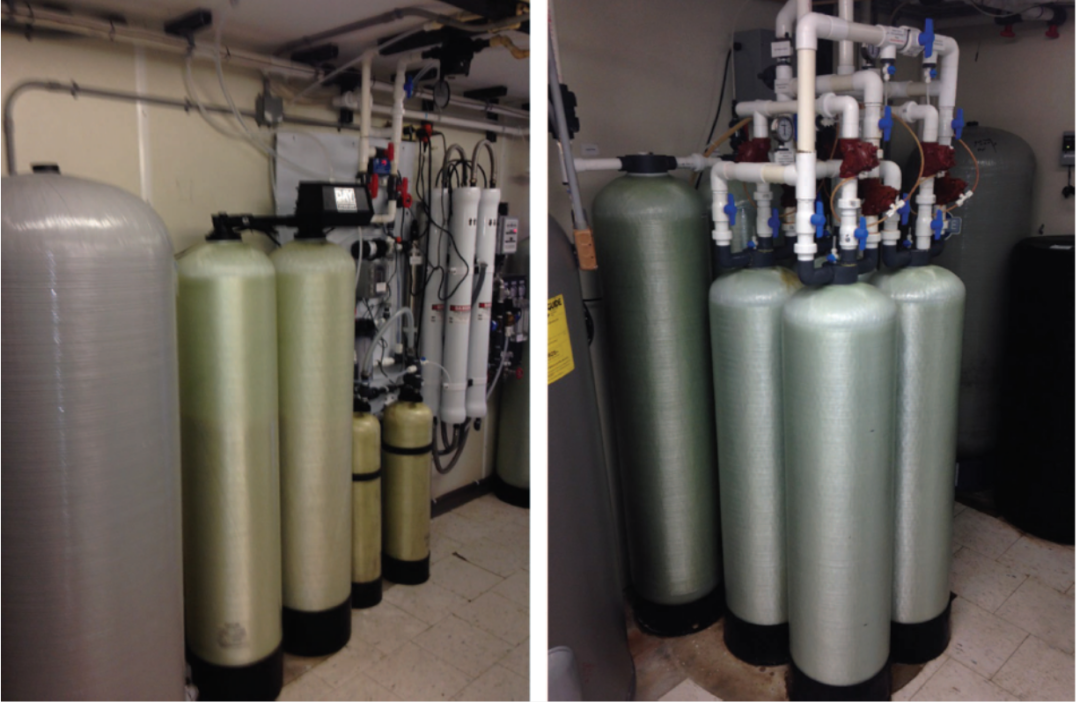
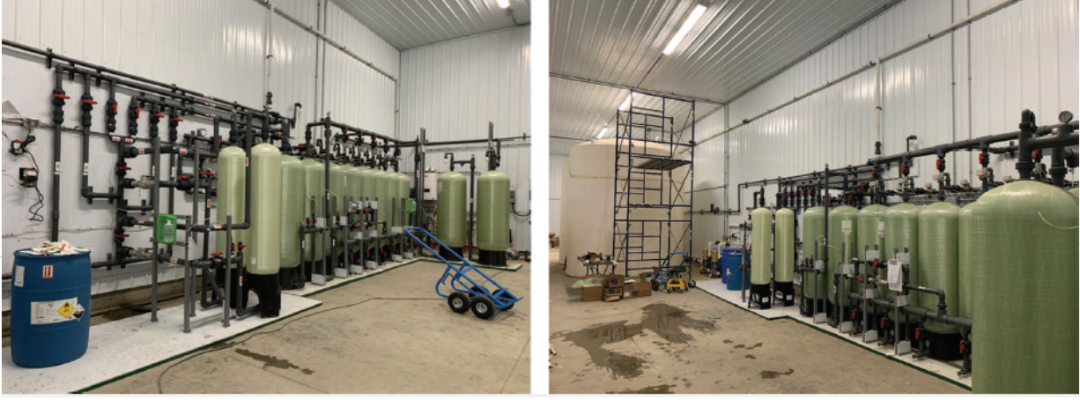
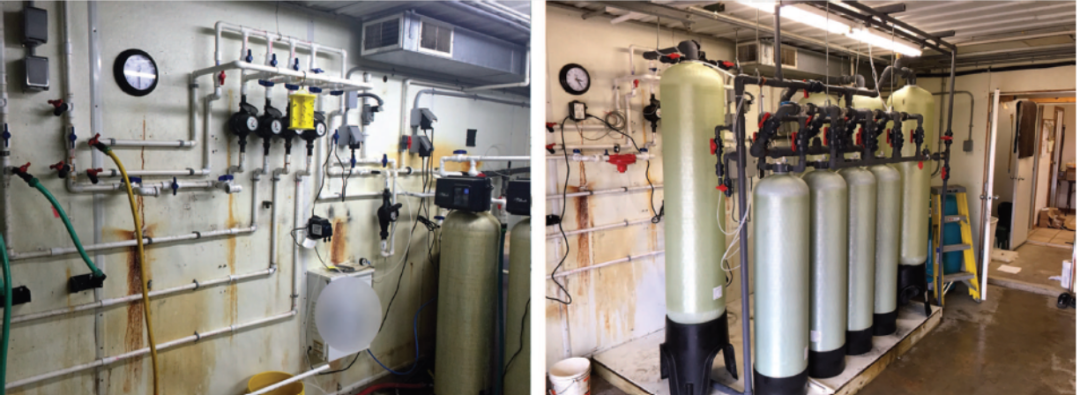
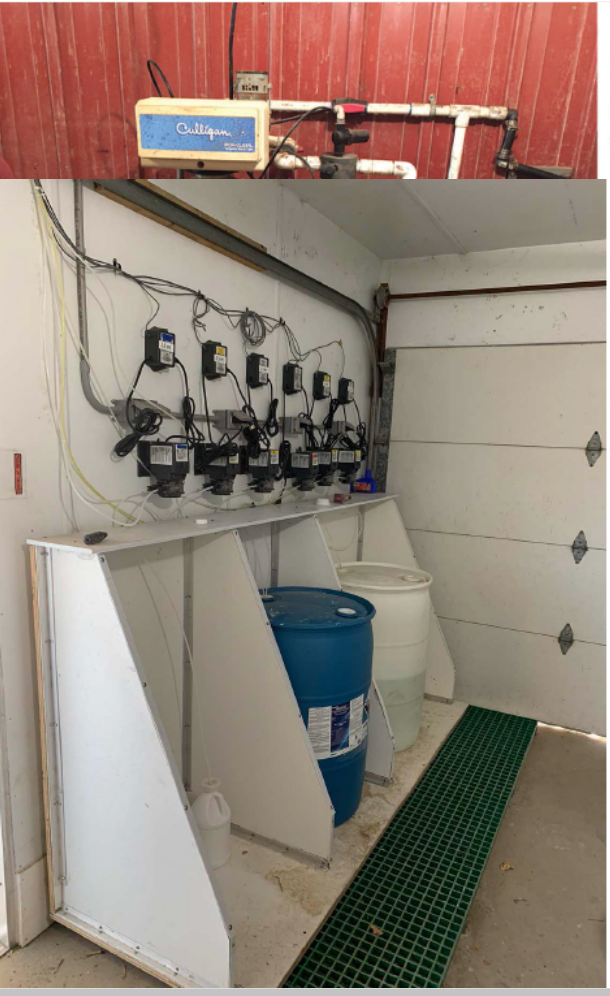
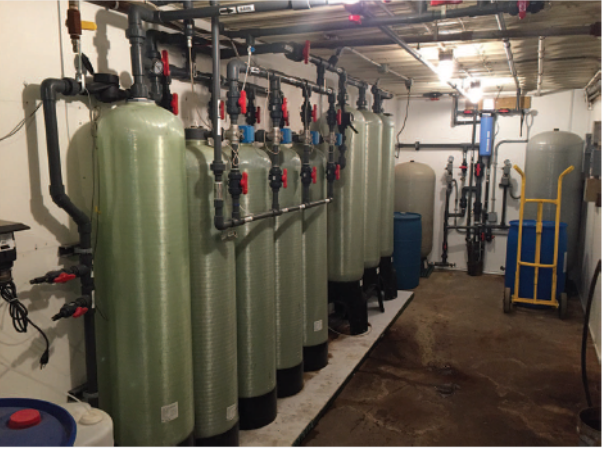
-完-
-The end-
服务热线:400-808-6188
Copyright©2010-2022 https://www.zhuwang.cc